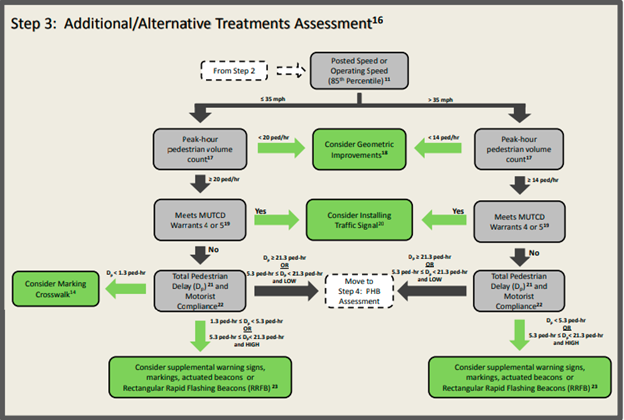Intersections with roadways are the most dangerous locations along shared use path (SUP) crossings for pedestrians and bicyclists. Despite this, there is limited research on the unique risks of these sites compared to other pedestrian and bicyclist facilities, and limited guidance exists for the geometric and operational characteristics that may necessitate different kinds of crossing treatments.
The North Carolina Department of Transportation funded this study to create clear, intuitive guidance for when to implement different treatments at SUP crossing sites across the state. To accomplish this goal, researchers collected video data at 16 different SUP sites with a variety of geometric and operational characteristics. These sites were broken into four general classifications based on the crossing types: unmarked crossings, marked crossings, crossings with refuge islands, and crossings with supplemental yielding or other traffic control devices. At each site, researchers collected a variety of data, including road user volumes, driver yielding behavior, and post-encroachment time.

Guidance for Additional Treatments at Midblock Pedestrian Crossings
After collecting these data, researchers developed a Safe System SUP Crossing Evaluation tool that inputs geometric and operational data and outputs a variety of scores based on pedestrian and bicyclist exposure to risk, likelihood of being involved in a severe conflict, severity of potential conflicts, and the site's overall Safe System compliance. These scores were then analyzed using linear regression and logistic regression—alongside variables for treatment type, speed limit, and vehicular traffic, as well as measures of critical post encroachment time—to determine potential guidance for installing different types of countermeasures.
In general, the sites that had the highest degrees of Safe System compliance (i.e., those sites that provided separation in space and time) tended to have the lowest number of critical crossing interactions. Based on these results, the researchers developed a Safe System SUP Crossing Decision tool and relevant case studies that will support NCDOT staff and local practitioners in proactively addressing risks at SUP crossing sites by selecting appropriate crossing treatments.
